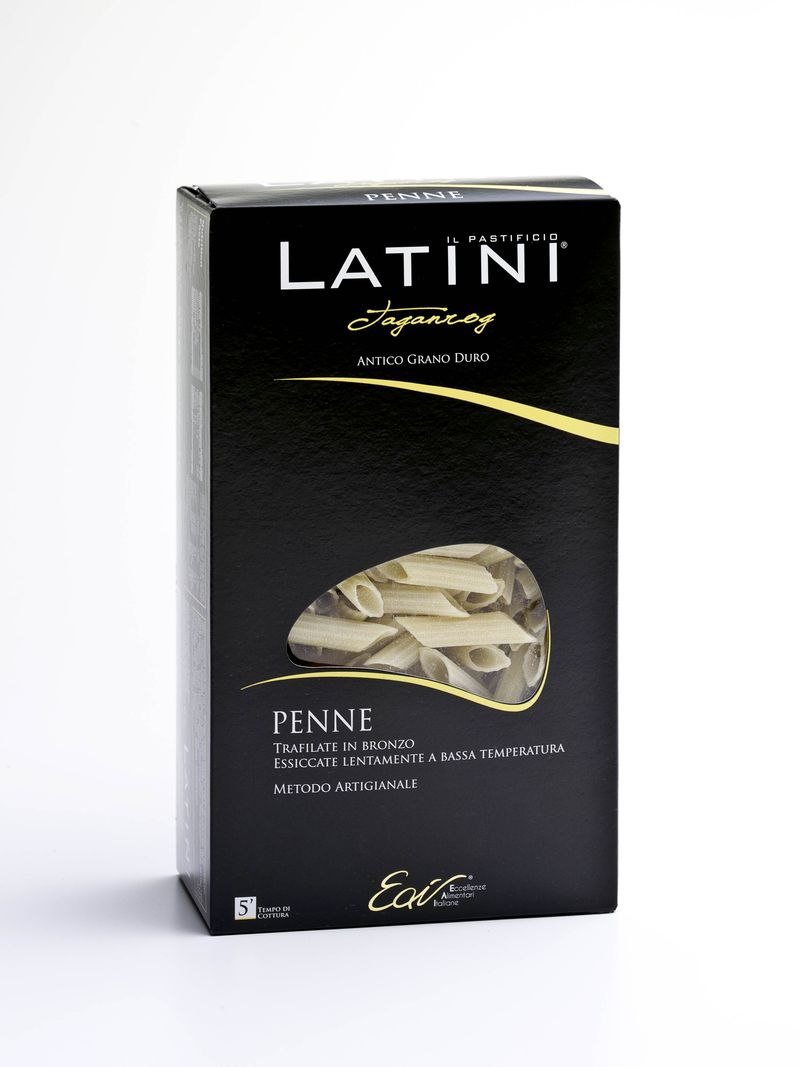Pasta Latini made with Taganrog wheat is FINALLY back, after a worldwide absence of two years!!! Why this long? This wheat is very delicate and did not want to grow in 2008 and 2009. You cannot believe how painful it has been to receive the complaints of so many American fans who were left hungry for such a long time. No other pasta maker uses Taganrog wheat and, once you try it, you become addicted!!! You can order Latini Pasta Taganrog, the one and only pasta made with Taganrog wheat here.
This wheat was originally cultivated in Russia and it takes its name from the town of the same name, a port on the Sea of Azov. From here, this wheat was shipped all over the world, including, of course, Italy. Interesting to learn that in the 13th century, Taganrog was a colony of the Maritime Republic of Pisa.

Six centuries later, legend has it that a sailor named Giuseppe Garibaldi made frequent voyages to Taganrog to load cargoes of this wheat for the Italian market. While there, Garibaldi met Giambattista Cuneo, a sailor from Liguria who inducted him into the revolutionary Young Italy movement that launched Garibaldi in his role as a hero of the unification of Italy.
The fact that the Latinis were able to resume the production of Taganrog pasta in the exact year when Italy celebrates its 150th birthday is a wonderful coincidence that makes us feel very hopeful that this pasta will have an enormous success!
Long life to Italy, long life to Taganrog Pasta!!! And thank you Carlo and Carla Latini for making us dream, again!

How do thecarbohydrate and calorie counts of taganrog compare with refular Latini pasta? And Latini compared with, say, Barilla?
Thanks
Mike Mead
I don’t know. I will turn the question to the experts: the Latinis. Will give you a very intelligent answer soon. Grazie!
Barilla pasta sold in US is made with Roundup tainted flour. It is not at all the same product. That has nothing to do with calories or carbs, I know, but healthwise, it is omportant.
Dear All, sorry but I don’t write English very well and this answer is for me impossible to traslate… in italiano vi rispondo così:
La Linea Classica ha 14% di proteine sulla pasta e Taganrog, sempre sulla pasta ha 13,5% di proteine.
Sul grano duro secco la miscela usata per la Classica arriva al 15% il Taganrog, quest’anno, anche al 17%.
Le altre percentuali in tabella nutrizionale si calcolano attraverso una formula matematica legata ad una legge europea che regola l’etichettatura sulla pasta.
Avrai fatto caso che pressappoco le tabelle nutrizionali sono tutte uguali unità di misura in più o in meno.
Quello che fa la differenza fra il Taganrog e le altre varietà di grano duro è la qualità del glutine che determina il valore del 17% sul secco e che determina la tenacità in cottura e la tenuta di cottura. Faccio un esempio stupido ma di facile comprensione:
una persona alta 1,70 cm pesa 90 kg e sembra un po’ obesa (varietà di grano duro normale)
una persona alta 1,70 cm pesa 90 kg ma sono 90 kg di muscoli. Sembra una persona in forma. Ma in fondo pesano uguale.
You understand? please Beatrice help me!
ciao a tutti e tantissimi baci.
Carla Latini
La percentuale di proteine sul secco in più sul Taganrog va ad arricchire la tenuta di cottura ed il sapore. si chiama tenacità del glutine ed è la qualità che preferiscono i pastai.
Ciao, Beatrice!
Is the taganrog wheat grown in Italy now? It is of paramount importance to me and my customers when something is TRULY a “Product of Italy’.
Emily
Ciao Emily! Yes, already in early 1900 this wheat was cultivated in Italy, since it had become so popular. It adapted to the Italian climate very well. Then, in the ’60s, with the advent of agribusiness, it became extinct because it was impossible to work it with big machines.
The Latinis started to grow the wheat in Italy, again, ten years ago and started to make pasta with it. Then, they had no harvest for 2 years. Now it is back. It’s the Latinis themselves who grow the wheat in Italy.
Thank you for asking!